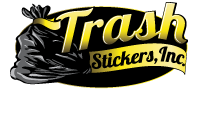(Pay-As-You-Throw) PAYT
What is (Pay-As-You-Throw) PAYT?
PAYT is a system in which residents pay for the actual quantity of trash discarded, rather than paying a fixed fee per household. It is similar to paying by the kWh for electricity. As residents pay directly for the quantity of trash they produce, they have a financial incentive to reduce waste through recycling, composting, and source reduction.
Households generating less trash will pay less than those generating more.
How does (Pay-As-You-Throw) PAYT work?
- Curbside collectors only pick up trash with the Municipalities or Waste Haulers stickers on them
- Your Municipality or Waste Hauler considers the stickers/tags as your form of payment for the number of trash bags or cans you put out at the curb for collection
- You buy from the Municipality or Waste Haulers or from places they have set up, stickers/tags that you can affix to your own trash bags or cans
Why (Pay-As-You-Throw) PAYT stickers?
- Bright colors and easy to see on bags or carts
- Metallic colors available that can’t be duplicated
- Can be used in all types of bags, carts or for extra waste programs
- Aggressive all weather adhesive, hard to remove when properly used without tearing
- Customized printing for logos, clip art, phone numbers, rules and instructions right on the sticker
- Can be numbered for inventory control and security
- Can be security die cut to prevent duplicating
- White strip under numbering to prevent using one for two
- Hard to almost impossible to duplicate (flood-coated ink, perforated, slits on back)
- Easy to inventory for the Municipality or the Hauler
- Easy to inventory for the Seller which can be either the Municipality or an assigned Retailer
- Easy to store for the Customer
- Easy and low cost to distribute
- Low cost for shipping
- Low cost per sticker
What is the difference between (Pay-As-You-Throw) PAYT Trash Stickers and Trash Tags ?
Absolutely nothing!
They are the same thing, made the same way and used the same way.
Some Municipalities or Waste Haulers call them stickers, while other call them tags.
